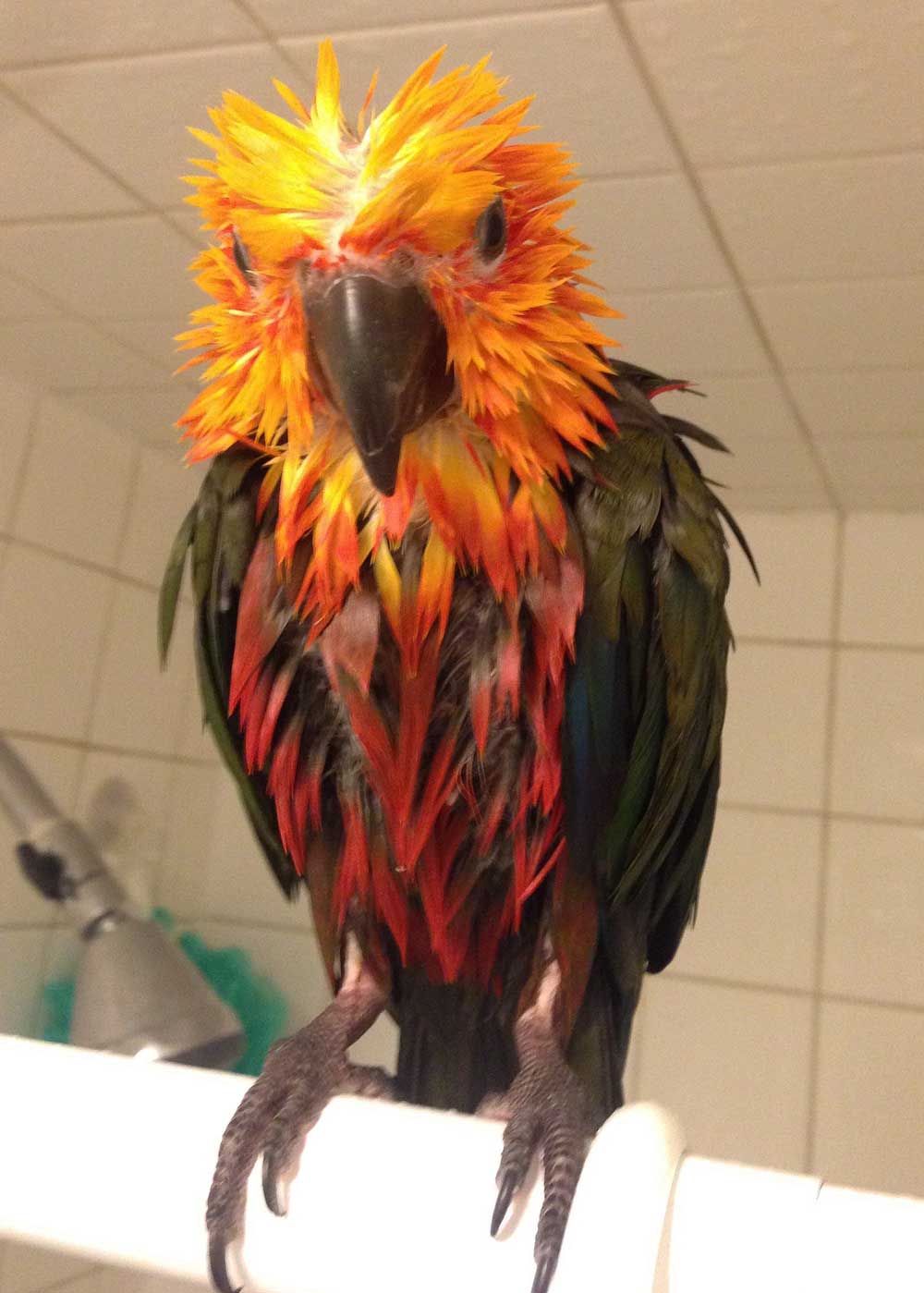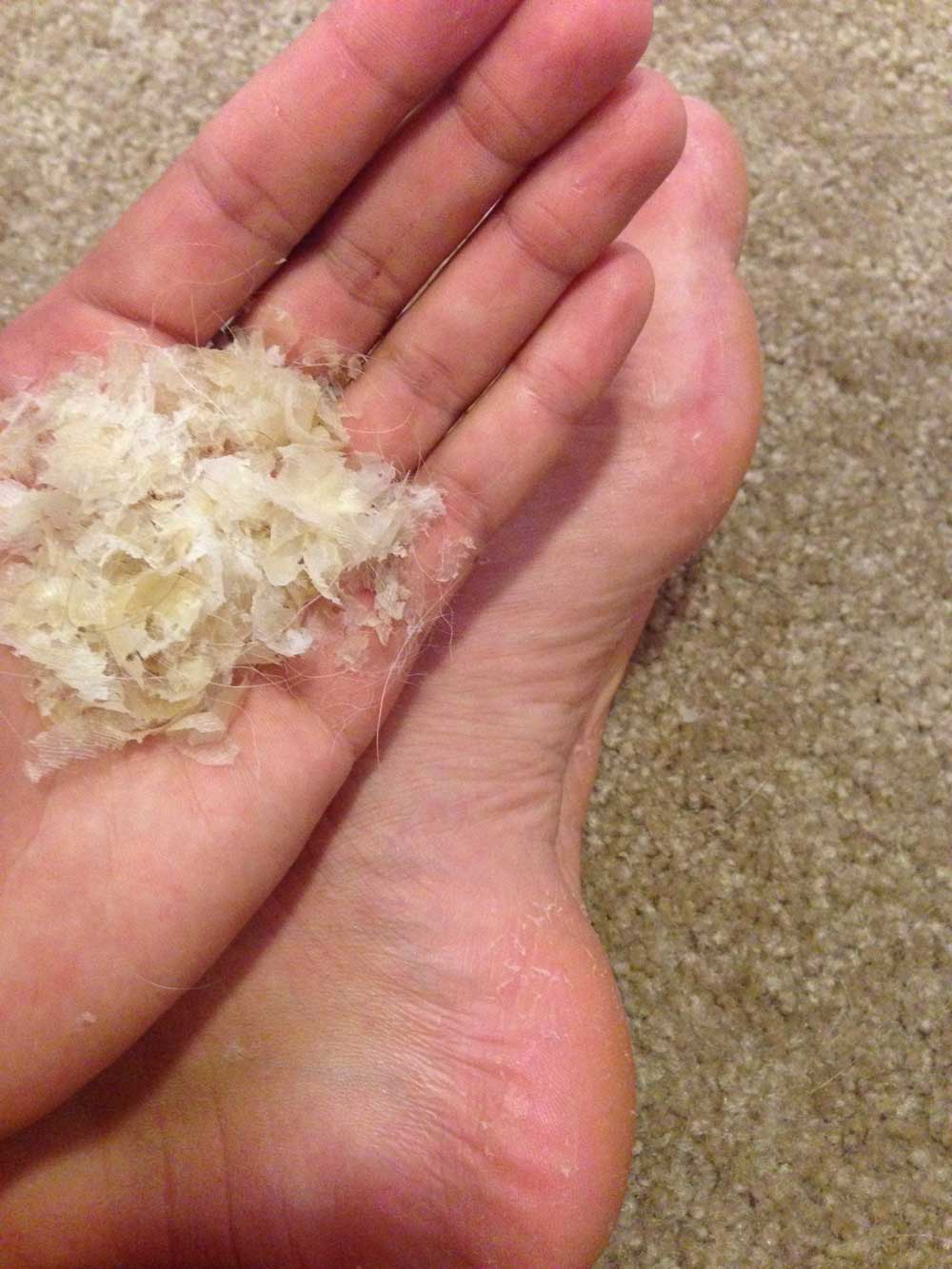 This is my dog, Meg.
This is my dog, Meg.
I love everything about her. Except for the clumps of hair that accumulate in the corner of the kitchen, or end up on my clothes as I rush out the door.
But it’s not her fault. When I need a new coat, I can just go to a store and pick one out. When she needs a new coat, she sheds.
Nearly all mammals with hair or fur shed in some way.
It’s their bodies’ way of prepping for a change in seasons. Some shed year-round, a few hairs at a time – like household cats. Others undergo annual or semi-annual shedding of fur and skin.

The largest mammal alive today that sheds its fur and top layer of skin is the Southern Elephant Seal. It sheds in big clumps, all at once, called a catastrophic molt.
Shedding VS Molting
Molting and shedding are very similar. And often, the terminology is interchanged because both involve replacing a part of the animal’s body for a new, better-suited version.
Molting is the routine “shedding” of the outer covering of an animal 1. But instead of changing for the season, molting often prepares an animal for a new stage of growth. And in contrast to casual shedding, molting is more intense and often creates a vulnerable time for the animal. Animals who molt include reptiles, amphibians, anthropods, birds, and even a few arachnids, such as tarantulas.
So…mammals shed their fur. These other animals, listed below, shed their skin through the molting process.
Reptiles and Molting
Unlike mammals, a reptile’s skin doesn’t grow with the rest of their body. When it outgrows the skin, it needs to shed it and start fresh. This happens within a day.
It sounds simple to just slide out of old skin, but snakes and lizards don’t have much fun with this process. Most become irritable during this procedure, losing their appetite and becoming inactive.
Leading up to a molt, a snake’s coloring dulls and a milky cast covers their eyes. Then the snake rubs against rough surfaces, like bark or rocks, and the skin comes off inside out, from the nose to the tail.

Our snake Voldemort is Molting
Like reptiles, amphibians also replace their entire skin during growth. However, instead of leaving their skin behind, frogs, toads and other amphibians eat the old skin cast. Yum.
Arthropods and Molting
Arthropods (crabs, lobsters, krill, and insects) also undergo molting in a process called ecdysis. Instead of skin, they have exoskeletons, which are strong, protective shell-like structures on the outside of their boneless bodies. Just as in reptiles, when arthropods grow too big for one exoskeleton, they must molt by splitting it open and forming a new layer of protection.
During this time, arthropods stop eating, lie still, and become vulnerable to predators. A familiar example of this process is the transformation of a caterpillar to a butterfly. The cocoon is actually a form of ecdysis, or molt.

Birds
Our feathered friends also experience molting, but not because they need room to grow. Feathers are made of the same “dead” material as human hair and nails; they don’t heal when damaged. A worn out or damaged feather must be replaced through molting. Molting on birds is varied. It can either be complete, where all feathers are replaced during the same molt period. Or it can be partial, where only a few feathers are replaced at a time. During the huge task of a complete molt, birds become flightless and seek shelter until finished.
Molting is useful in always keeping birds in prime flying condition. However, if a bird loses an entire feather, a new one will start growing back immediately, rather than waiting for the next molt. This is why feathers are clipped in captivity, rather than plucked.

Humans
Thankfully, as humans, we don’t become bedridden and vulnerable every time our body needs to grow. Our skin is awesome and just grows with us. But, our skin does still shed. We lose an average of 1.5 million skin cells every hour. And our entire skin surface is replaced about every 28 days.
And you often don’t even realize it’s happening. Unless you struggle with dandruff. Or are like me, and speed up the process in want of baby soft feet after a summer of hiking in Chacos.

Shedding and molting. It’s not always pretty. It’s not always fun. But it’s necessary. It’s everywhere. And it’s pretty cool.
One fun fact about the molting process of the tarantula is the regeneration properties. If the spider is missing a leg, it can be regenerated during the molting process. That’s right! It can regrow (reform) the missing limb. The new leg may be smaller and not as useable as the original, but that’s still amazingly cool 2.
Resources:
- http://www.reptileknowledge.com/articles/article8.php
- http://www.dogbreedinfo.com/shedding.htm
- http://www.anapsid.org/shedding.html
- http://www.newworldencyclopedia.org/entry/Molt
At High Trails Outdoor Science School, we literally force our instructors to write about elementary outdoor education, teaching outside, learning outside, our dirty classroom (the forest…gosh), environmental science, outdoor science, and all other tree hugging student and kid loving things that keep us engaged, passionate, driven, loving our job, digging our life, and spreading the word to anyone whose attention we can hold for long enough to actually make it through reading this entire sentence. Whew…. www.dirtyclassroom.com

Comments are closed.